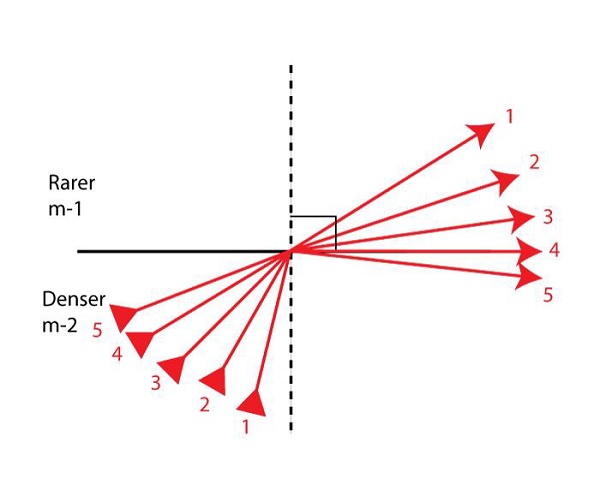Total Internal Reflection
Description:
When a ray of light is incident on a interface of transparent medium, part of light is reflected and some part is refracted.
The ray of light travelling from an optically denser medium to optically rarer medium goes away from the normal i.e. ∠r > ∠i
For a certain value of ∠i, the refracting angle will become 900 which is called critical angle i.e. that angle of incidence for which angle of refraction is 900 is known as critical angle ‘C’ of that medium.
All the rays which have incident angle less than the critical angle will move to another medium after refraction, but the rays which have incident angle more than the critical angle will reflect back to the same medium.

Relation between refractive index and critical angle
We have the formula for refractive index as –
μ = sin isin r
For the case of critical angle as in figure –
i = C and r = 900
Therefore,
μ12 = sin Csin 900
∴ μ12 = sin C
∴ μ21 = 1sin C
When a light travels from a denser medium to rarer medium and its angle of incident is larger than a critical value, then it will reflect back in the same medium. This phenomenon is called total internal reflection.
Note − There is no energy loss when total internal reflection of light occurs.
Conditions for total internal reflection are
The ray of light must be travelling from denser medium to rarer medium.
The angle of incidence in the denser medium must be greater than the critical angle.

